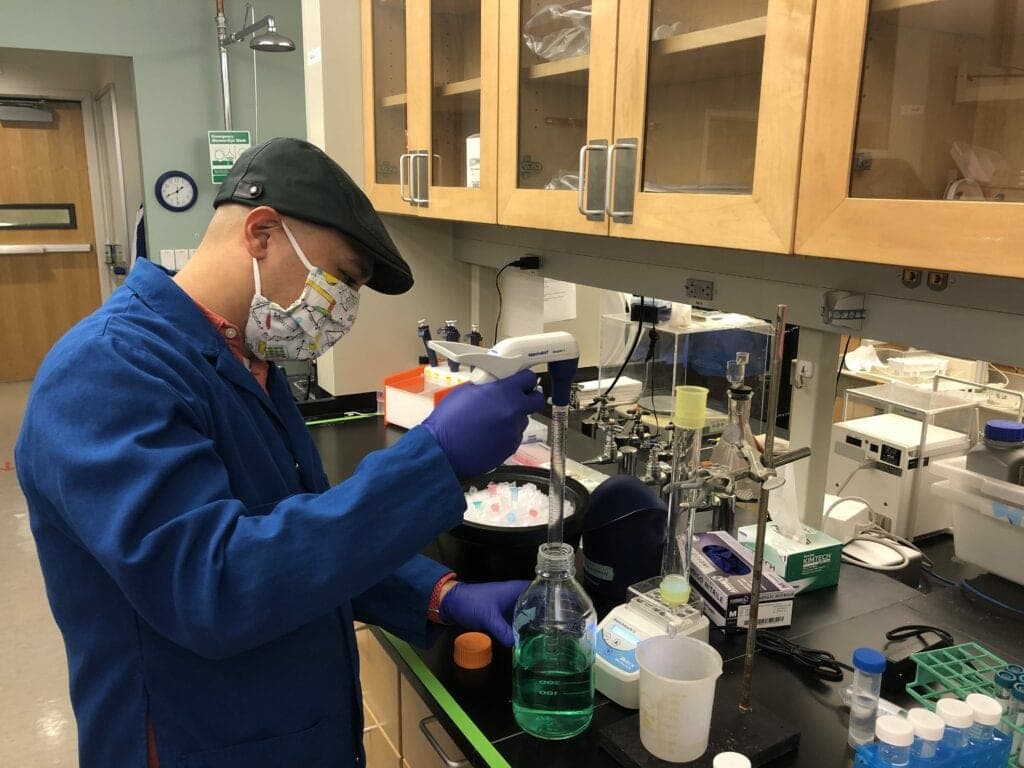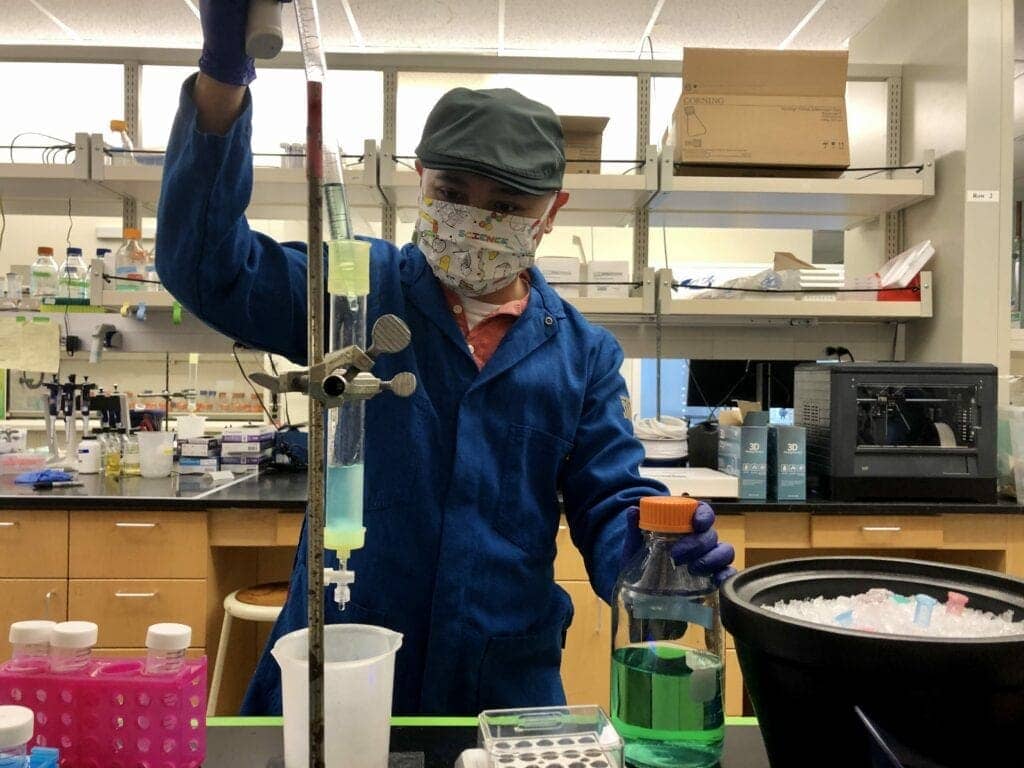In time, scientists’ growing understanding of the genetic underpinnings of delayed sleep phase and other circadian disorders could pave the way to novel therapeutics.
By Lisa Spear
Within every plant, animal, and human are molecular internal biological clocks, oscillating within each cell, working as tiny timekeepers to regulate everything from hormones to body temperature.
Most human internal circadian rhythms are thought to align with a 24-hour period, but some people’s internal clocks are longer or shorter. An internal circadian rhythm so long that it causes distress can be attributed to delayed sleep phase disorder, a condition in which a person’s sleep is stalled by two hours or more, beyond what is normally considered a typical bedtime.1
Molecular biochemist Carrie Partch, PhD, and her team at the University of California, Santa Cruz, recently discovered one of the genetic underpinnings of delayed sleep phase disorder and believe it may be possible to develop therapeutics that will help repair a person’s internal clock.

In some people with delayed sleep phase disorder, a small piece of a protein called a cryptochrome (CRY1), which is an integral part of the natural timekeeping mechanism inside human cells, is missing.2
Specifically, there is a tiny empty pocket on the cryptochrome’s “tail.” Unique to this cryptochrome, Partch describes the tail as “a wiggly little line, almost like a fly-fishing line, that extends from the protein.”
Due to a missing piece, the cryptochrome doesn’t bind as tightly to other clock-modulating proteins within the cell, creating a longer, more drawn-out rhythm. By finding a molecule that can fit inside this empty pocket, scientists hope they can “tighten” the circadian clock mechanism on a cellular level. The goal would be to adjust sleep schedules with a new drug.
“What we are hoping to do is to leverage the understanding of the changes that happen with this mutation to identify therapeutic approaches that would maybe reverse this change and allow people who have this mutation to go to bed, for example at 10 or 11 pm, and get a good night’s sleep,” says Partch, a professor of chemistry and biochemistry.
“We think we have a very viable strategy for drug discovery that could do just this.”
Testing Compounds
In collaboration with the artificial intelligence drug discovery company Atomwise, she is testing that theory using compounds designed to bind to the protein involved in molecular timekeeping.
The lab is screening millions of small molecules and a plate of as many as 72 molecule compounds for follow-up functional testing. Atomwise is providing support in computational biology and medicinal chemistry as part of a program designed to give promising researchers the resources to help advance their work in finding solutions to complex human health conditions.
“The goal would be to have people be able to shift their clock forward, or to have a clock period or time that would work better with the 24-hour world that we live in,” Partch says.
If a strong drug candidate is found, Partch believes it could offer benefits to more than just those with the night owl mutation, or jet lag, or unusual work hours. “Almost anything you can think of in your body is controlled by the circadian clock, from metabolism to cardiovascular function to hormone production and even other behavioral and mood changes,” she says. “If we can find a molecule that will help clocks stay ticking along with their environment, it should have a strong effect on promoting human health.”

Major Research Advances
Our understanding of the mechanisms of cellular circadian rhythms has come a long way in the past few decades. In 2017, a trio of American researchers won the Nobel Prize for their discoveries of the molecular mechanisms controlling these circadian rhythms.
“It is quite amazing. It’s beautiful. You can visualize it in individual cells,” says Alina Patke, PhD, a research associate in the lab of Michael Young, PhD, one of the Nobel Prize winners, at Rockefeller University’s Laboratory of Genetics.
The Nobel Prize-winning scientists pinpointed a gene in fruit flies that modulates the daily rhythm, known as the “period” gene. This gene encodes a protein within the cell during the night, which then erodes throughout the day.3
Not long after, a team of scientists, including Patke and Young at the Rockefeller University lab, discovered a CRY1 mutation by studying the skin cells of people with delayed sleep phase disorder.`
They also found that the variant appears to be relatively common, appearing in 1 in 75 individuals of non-Finnish, European ancestry in a gene database search.
This work laid the foundation for and inspired Partch’s current research into the CRY1 tail mutation and propelled her to search for a therapeutic molecule to treat delayed sleep phase disorder.
As research continues to emerge diving deeper into the science of circadian rhythms, there are still few treatment options for people who struggle with circadian irregularities.
“People who have this genetic variant are more prone to have these later sleep times. This is something that can be really frustrating for people,” explains Patke, who is now moving to a new role as a research assistant professor at the California Institute of Technology in Pasadena, California.
While it is often one of the more difficult circadian rhythm disorders to live with, delayed sleep phase disorder is also one of the most common, impacting an estimated .2% to 10% of the general population.4 Patke herself is a night owl and regularly stays up late to work, but it hasn’t created too many problems for her.
Some people who have delayed sleep phase disorder may find that their societal obligations conflict with their natural circadian rhythms. These individuals can suffer from chronic sleep deprivation, which can in turn have a trickledown effect, contributing to many health problems.
“We know that chronic sleep deprivation increases your risk for many cancers, psychiatric disorders, neurodegenerative disorders, heart disease, metabolic disease. The risk can probably be increased for every disease or medical problem,” says neurologist Louis Ptacek, MD, professor of neurology at the University of California, San Francisco School of Medicine.
“This is more of a problem for night owls, who can’t go to sleep, but then have to set an alarm and wake up tired.”
In the most extreme cases, people drift endlessly through time, pushing their sleep window continuously forward or backward. This circadian sleep disorder, primarily found in the blind, is called non-24 sleep phase disorder and it is still a mystery as to why it occurs.
Currently, the only way to treat delayed sleep phase disorder is through entrainment with light or with the supplementation of melatonin. But, Ptacek says, many people find that they can alter their lifestyle to accommodate their sleep schedules.
“I am careful about not making any sort of judgments about what is good or bad, what is disease or not disease when it comes to sleep schedules,” says Ptacek.
“There are many normal variations in circadian rhythms, and we leave it to the individual to decide what works for them and what makes them happy.”
Lisa Spear is associate editor of Sleep Review.
1. Patke A, Murphy PJ, Onat OE, et al. Mutation of the human circadian clock gene CRY1 in familial delayed sleep phase disorder. Cell. 2017 Apr 6;169(2):203-215.e13.
2. Gian Carlo GP, Ivette P, Jennifer LF, et al. The human CRY1 tail controls circadian timing by regulating its association with CLOCK:BMAL1. Proc Natl Acad Sci U S A. 2020 Nov 10;117(45):27971-9.
3. Baylies M, Bargiello T, Jackson F, Young MW. Changes in abundance or structure of the per gene product can alter periodicity of the Drosophila clock. Nature. 1987 Mar 26-Apr 1;326(6111):390-2.
4. Zee PC, Attarian H, Videnovic A. Circadian rhythm abnormalities. Continuum. 2013;19(1 Sleep Disorders):132-47.
Clock Photo ID 47091610 © Vvoevale | Dreamstime.com





